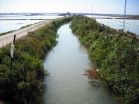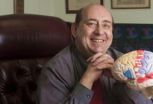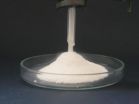(Press-News.org) The water in the canals and irrigation channels in the L'Albufera Natural Park in Valencia contain cocaine, ecstasy and a further six drugs. This has been confirmed by a study carried out by researchers from the University of Valencia (UV), who have issued a warning about the continued presence of these substances on wildlife and human health.
"The results confirm the presence of drugs such as cocaine, amphetamines, codeine, morphine and cannabis in the surface waters of the L'Albufera National Park at levels ranging between 0.06 and 78.78 nanograms/litre", Yolanda Picó, lead author of the study and a senior professor in the Department of Nutrition and Bromatology at the UV, tells SINC.
Scientists from this university and the Desertification Research Centre (CSIC-UV-GV) analysed the presence of 14 kinds of illegal drugs – including heroin, cocaine and ecstasy – in 16 canals and irrigation channels in the natural park. The study looked for the residue these drugs leave behind in human urine after they have been taken, and which end up in the water.
The results, published in the journal Analytical and Bioanalytical Chemistry, positively showed the presence of eight kinds of drugs, particularly cocaine and ecstasy. "Cocaine and its metabolites (such as benzoylecgonine) were ubiquitous in all the samples taken, while ecstasy (3.4-methylendioximetamphetamine, or MDMA) was also found very frequently", Picó explains.
The greatest drug concentration and frequency was found in the north of the park, above all in the area of the Poyo ravine. Waste water is regularly discharged in this area, and it also has the highest population density (almost 70% of the total population), as well as industry and nightclubs.
The researcher points out that this "indicates, with increasing likelihood, that drugs are reaching the sewer and channel systems, and that in many cases they could be affecting the irrigation channels and waters of the L'Albufera lake".
The team also found very high levels in some particular samples taken in the area of Benifaió and Almusaffes, which can only be explained by the presence of untreated waste water.
A risk for the wetlands
Exhaustive eco-toxocological studies into the risk the presence of these substances in the water could pose to people and the environment have not yet been carried out. However, the scientists have issued a warning about the possible consequences.
"The health problems potentially caused by consuming these, added to the fact that these residues are still strongly pharmacologically active, may have consequences for land organisms and aquatic fauna", said Picó.
The L'Albufera Natural Park is one of the most important wetlands in Europe because of its biodiversity of flora and fauna, and because it is a key area for migratory birds. The area is a SPAB (Special Protection Area for Birds), is on the List of Sites of Community Importance for the Mediterranean Biogeographical Region, and is covered by the RAMSAR Convention on Wetlands.
Paradoxically, the park is surrounded by cities, industries, farms, shopping malls and leisure centres. The wetland is bordered by the Mediterranean highway and the V-31 motorway, and crossed by the Saler motorway and other roads. The L'Albufera is also affected by pressure from the 12 urban centres – including the city of Valencia – and the 14 municipal districts that surround it.
INFORMATION:
Reference:
Pablo Vázquez-Roig, Vicente Andreu, Cristina Blasco y Yolanda Picó. "SPE and LC-MS/MS determination of 14 illicit drugs in surface waters from the Natural Park of L'Albufera (València, Spain)". Analytical and Bioanayitical Chemistry 397 (7): 2851-2864, agosto de 2010. DOI 10.1007/s00216-010-3720-x.
Cocaine and ecstasy detected in waters of the L'Albufera in Valencia
2010-09-22
ELSE PRESS RELEASES FROM THIS DATE:
IVF does not negatively affect academic achievement
2010-09-22
Children conceived by in vitro fertilization (IVF) perform at least as well as their peers on academic tests at all ages from grade 3 to 12, according to a new University of Iowa study.
In fact, the study, published in the October issue of the journal Human Reproduction, found that children who were conceived by IVF actually scored better than age- and gender-matched peers on the Iowa Test of Basic Skills and the Iowa Test for Educational Development (ITBS/ED).
"Our findings are reassuring for clinicians and patients as they suggest that being conceived through IVF ...
New drug could help stop the spread of disease during cough: U of A research
2010-09-22
What if there was a drug that could completely eliminate airborne disease transmission that occurs when someone coughs? Researchers at the University of Alberta believe they have found a way to achieve this.
The idea behind this work came from Malcolm King and his research associate Gustavo Zayas, who work in the Division of Pulmonary Medicine at the U of A's Faculty of Medicine & Dentistry. King and Zayas developed a drug that, when inhaled, would reduce or eliminate the amount of droplets, called bioaerosol, coming out of the mouth when a disease-infected person coughs. ...
Toward the first nose drops to treat brain cancer
2010-09-22
Scientists are reporting the development and successful initial testing of a new form of methotrexate — the mainstay anticancer drug — designed to be given as nose drops rather than injected. It shows promise as a more effective treatment for brain cancer, they say. The report appears in ACS' Molecular Pharmaceutics, a bi-monthly journal.
Tomotaka Shingaki and colleagues note that brain cancer is difficult to treat, partly because current anticancer drugs have difficulty reaching the brain. That's because the so-called blood-brain barrier (a protective layer of cells ...
Talking while walking puts Parkinson's patients at risk for falls
2010-09-22
We've all heard the saying about people who can't walk and chew gum at the same time, but it turns out that walking and talking is difficult enough, especially for people with Parkinson's disease who are at increased risk for falls with injury.
A new Florida State University study found that older adults with Parkinson's disease altered their gait — stride length, step velocity and the time they spent stabilizing on two feet — when asked to perform increasingly difficult verbal tasks while walking. But the real surprise was that even older adults without a neurological ...
Ingredient in soap points toward new drugs for infection that affects 2 billion
2010-09-22
The antibacterial ingredient in some soaps, toothpastes, odor-fighting socks, and even computer keyboards is pointing scientists toward a long-sought new treatment for a parasitic disease that affects almost two billion people. Their report on how triclosan became the guiding light for future development of drugs for toxoplasmosis appears in ACS' monthly Journal of Medicinal Chemistry.
In the study, Rima McLeod and colleagues point out that toxoplasmosis is one of the world's most common parasitic infections, affecting about one-third of the world population, including ...
NYU Langone researchers present at Transcatheter Cardiovascular Therapeutics scientific symposium
2010-09-22
Researchers from the Cardiac & Vascular Institute at NYU Langone Medical Center will present at the Transcatheter Cardiovascular Therapeutics (TCT) 2010 scientific symposium on September 21-25, 2010 in Washington, DC. They will be available for interviews during the conference.
Louis Miller, MD
Interventional Cardiology Fellow, Department of Medicine, Leon H. Charney Division of Cardiology at NYU Langone Medical Center
Wednesday, September 22, 2010
Presenter
•Very Long-term Clinical Follow-up After Fractional Flow Reserve-Guided Coronary Revascularization, ...
'Dry water' could make a big splash commercially
2010-09-22
An unusual substance known as "dry water," which resembles powdered sugar, could provide a new way to absorb and store carbon dioxide, the major greenhouse gas that contributes to global warming, scientists reported at the 240th National Meeting of the American Chemical Society. The powder shows bright promise for a number of other uses, they said. It may, for instance, be a greener, more energy-efficient way of jump-starting the chemical reactions used to make hundreds of consumer products. Dry water also could provide a safer way to store and transport potentially harmful ...
Putting on the pounds after weight loss? Hit the gym to maintain health gains
2010-09-22
COLUMBIA, Mo. – Although obesity is a major risk factor for disease, much of the threat may be associated with the metabolic (or cardiometabolic) syndrome, a cluster of risk factors related to diabetes and heart disease. Losing weight can improve health and reduce many of these risk factors. However, many people struggle to keep the weight off long-term. Now, researchers at the University of Missouri have found that people who perform resistance training while regaining weight can help maintain strides in reducing their risks for chronic disease.
"Long-term weight loss ...
Electricity collected from the air could become the newest alternative energy source
2010-09-22
Imagine devices that capture electricity from the air — much like solar cells capture sunlight — and using them to light a house or recharge an electric car. Imagine using similar panels on the rooftops of buildings to prevent lightning before it forms. Strange as it may sound, scientists already are in the early stages of developing such devices, according to a report at the 240th National Meeting of the American Chemical Society.
"Our research could pave the way for turning electricity from the atmosphere into an alternative energy source for the future," said study ...
Portable laser devices to improve disease diagnosis
2010-09-22
Portable devices that use a laser beam to probe bones, teeth, and other parts of the body for early signs of diseases like osteoporosis and tooth decay may seem like something out of science fiction. But those devices are moving closer to reality, according to an article in the current issue of Chemical & Engineering News (C&EN), ACS' weekly newsmagazine.
C&EN Senior Editor Celia Henry Arnaud notes that these new diagnostic tools will have the ability to see beneath the skin and detect disease, without exposing patients to X-rays. They embrace a technology that involves ...


